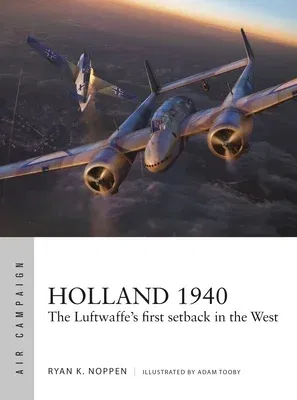The history of how the Luftwaffe planned to knock out Holland in a
surgical, lightning campaign, but instead suffered wounds against the
outnumbered but effective Dutch that would come to haunt them in the
Battle of Britain.
From the perspective of the German High Command, its invasion of the
Netherlands on May 10, 1940 was supposed to be a lightning fast surgical
strike, aimed at shoring up the right flank of the Wehrmacht's massive
assault on France and Belgium. In a bold manoeuvre, the German Luftwaffe
would launch what was at the time the largest airborne operation in
history, calculating that surprise and speed would negate the need for a
lengthy ground campaign or large numbers of ground troops, using
paratroops and air-landing troops to capture key strategic point that
would clear the path for the subsequent capitulation of main Dutch city
and the government itself. The entire operation was expected to take
only 24 hours. The actual campaign proved to be much less efficient and
had devastating results for the Luftwaffe.
The Netherlands possessed Europe's first fully integrated antiaircraft
network, coordinated from a central command as well as modern and
competitive aircraft. Furthermore, the Dutch were not taken by surprise
on May 10, 1940, as is often assumed in most histories, thanks to the
efforts of Dutch intelligence services and an early radar system. By the
end of May 10, only some of the German objectives had been achieved and
the battle in Dutch skies and for Dutch airfields stalemated for a
further four days. Finally on the fifth day of the invasion with its
pre-campaign strategy having largely failed, the Luftwaffe resorted to
the terror bombing of Rotterdam in a desperate and successful attempt to
force the Dutch government to capitulate. While the Battle of the
Netherlands can be seen as a tactical victory for Germany, strategically
it has to be seen as the first major defeat for the Luftwaffe.
Explaining the technical capabilities and campaign plans of the two
sides, and charting how the battles were fought, this fascinating book
re-examines and reassesses this little-known part of World War II.
Dutch-speaking aviation analyst Ryan Noppen argues that while the air
campaign against Holland was a tactical victory for Germany, the ability
of the well-prepared but outnumbered Dutch to inflict heavy losses was a
warning of what would come when the Luftwaffe launched the Battle of
Britain.

